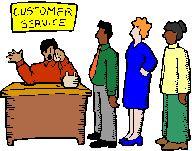Blogrige
The Official Baldrige Blog

I’ve compiled the following tips from interviews of presenters at the Baldrige Program’s 26th Annual Quest for Excellence® conference.
How to Get Started Using the Baldrige Framework:
- Communicate: Make sure you have the support of senior leadership and employees. Instigating organizational change is not a one-person challenge, and the only way to truly sustain change and excellence is if everyone is on the same page.
- Share/steal: The Baldrige community is so generous and open; take advantage of conferences and best-practice sessions. If you’re struggling in a certain area, it’s likely that other organizations have been down the same path and come out on the other side. There’s no sense in reinventing the wheel when so many great leaders and organizations are eager to share their stories with you.
- Keep going: It’s a journey, and one that will take you longer than you might expect. The Baldrige framework is not about an award or a temporary fix. It’s about lasting, continuous improvement and a systematic framework for excellence. You will never “master” the Criteria. Instead, you can use it every year, every month, every day, to ensure that your organization is striving for excellence in every aspect.
These tips are from Kelsey May, general counsel of MESA (2006 and 2012 Baldrige Award recipient, small business).
How to Build a Customer-Focused Strategy:
- Don’t treat continuous improvement, Lean, or another improvement strategy as an add-on to your current operations or a “bolt-on accessory.” Integrate improvement with your culture and how you do business.
- Build ownership for your strategy among the workforce. This means that you have to get people’s buy-in, but understand that some things are non-negotiable, such as safety, health, morals, and ethics.
- Work on a “demand-pull” approach of people wanting your products, rather than a “supply-push” approach.
- Don’t focus on efficient measures (these are noble, but you can wind up with lousy measures); instead, try for effective measures that are focused, do what they are supposed to do and are not overburdened with too many different purposes.
These tips are from Ken Dean, vice president/director of quality systems with the Customer Development Group of Nestlé Purina PetCare Company (2010 Baldrige Award recipient, manufacturing).
How to Manage Organizational Change:
- Shrink the change to effect change.
- Build on your “bright spots” (people, processes) to effect change.
- Understand that information is not necessarily the key to change; the key is not only to inform but also to demonstrate the change and ensure understanding through accountability checks.
- Innovate to sustain the change. To achieve different results, you have to do things a different way. Thinking of new ways to conduct value-added processes is key to growth.
These tips are from Jan Englert, RN, principal of quality and safety at Premier (2006 Baldrige Award recipient, service business).
How to Align an Organization and Manage Performance for Improvement/Change:
- Consider these three key accelerants to the organizational alignment needed for an improvement journey: (1) Highest-ranking officers who are personally committed to steering the journey, (2) senior executives who hold leaders accountable for metric-based performance outcomes through a performance management and evaluation system, and (3) senior teams who provide their leaders with the skills needed to maximize their own potential by providing mandatory, quarterly leadership training.
- Address chronically low-performing members of the team to prevent negative impacts on the culture of the organization, and reward successes of high-performing individuals so that you don’t miss out on the opportunity to maximize the potential of the lifeblood of the organization: the solid performers who need mentoring and coaching. A key work process for high-performing organizations includes a consistently practiced, fair, documented, and objective series of discussions with high, solid, and low performers to sustain the momentum for the arduous journey of cultural transformation.
These tips are from Craig Deao, member of the senior executive team of Studer Group (2010 Baldrige Award recipient, small business).





